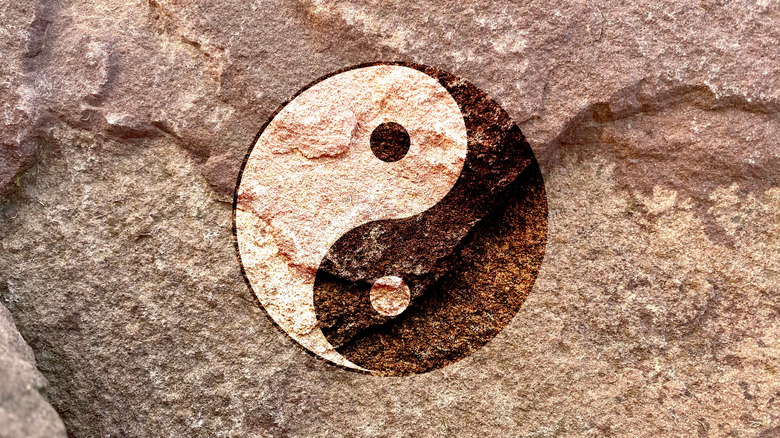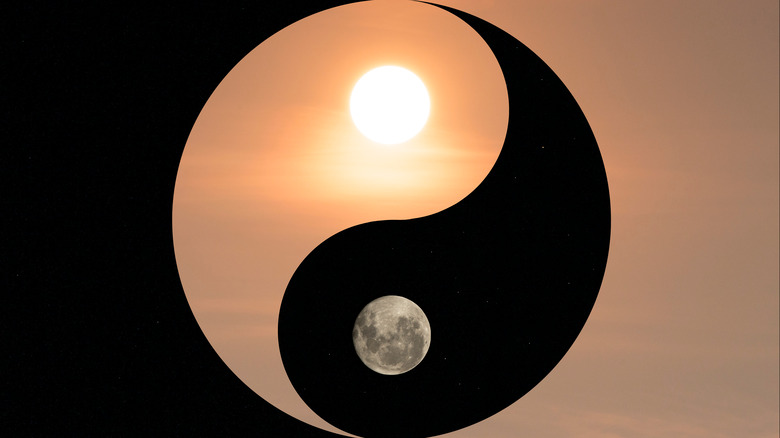Yin Vs. Yang: What's The Difference?
Many are familiar with the yin and yang symbol, but did you know it is called a taijitu? And did you know that it represents harmony? This iconic imagery, seen on clothes, in artwork, and beyond, is made up of two halves that form a whole, and those two sides have some deep and powerful meanings.
Yin and yang is an ancient Chinese philosophy that has to do with opposing yet complementary energies. Yin and yang philosophy exists in all aspects of life, as everything embraces connectivity and contains aspects of other beings (as seen in the taijitu's dots).
Overall, this represents harmony and unity, as yin and yang maintain a balance of chi energy, as stated by Ask Any Difference's website. But which side is which? What do the colors stand for and mean? How do they work together? Read on to find out the characteristics of and differences between these two halves.
Yin and yang express both masculine and feminine energies
So what do the halves represent when it comes to the yin and yang symbol, a taijitu? Yin is the female energy — black, negative, passive, inward, dark, and cool, like the moon and water. In fact, it is believed that the moon's phases can affect yin energies and that the yin force is the origin of yang. Yang is the male energy — white, physical, energetic, logical, active, and bright like the sun, as this star's movement influences yang energies.
Just as there is a relationship between negative and positive, passive and active, cool and dark, there is a connection between the white and black sides of this icon, and there is a powerful link between yin and yang (via Ask Any Difference). There is a balance and duality of opposing yet complementary forces (chi) in the physical world, as well an element of the nonphysical world that is always around us and that can be sensed (via Mind Body Green). This ancient philosophy can help explain the duality of life that we experience, and can help with grounding oneself in the knowledge that everything around us is connected.

